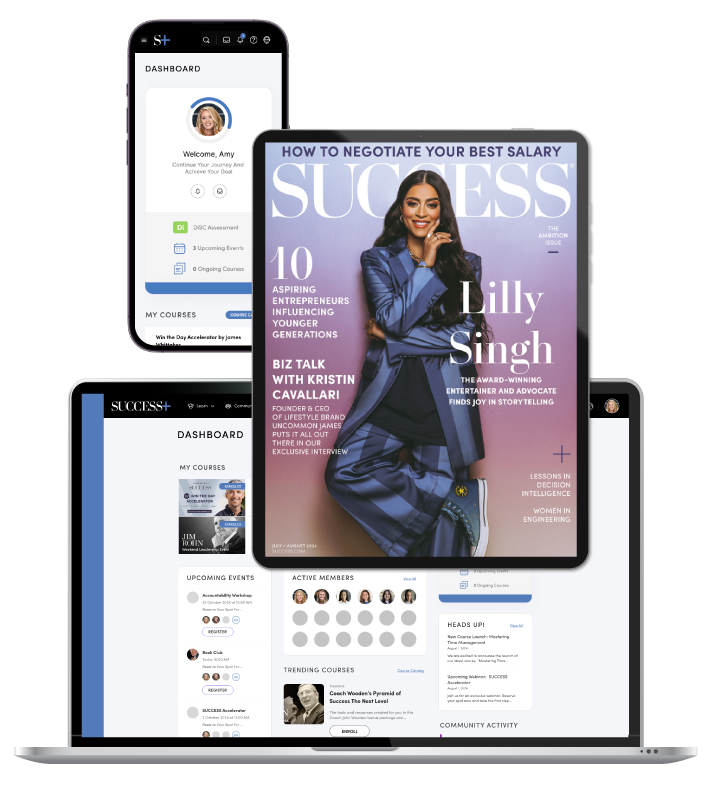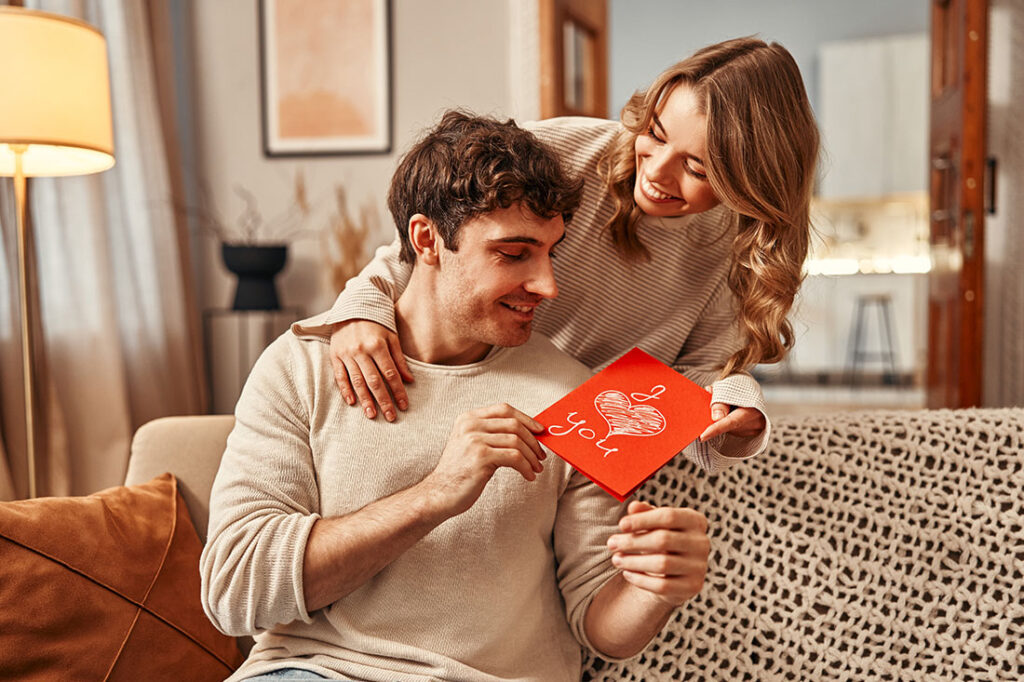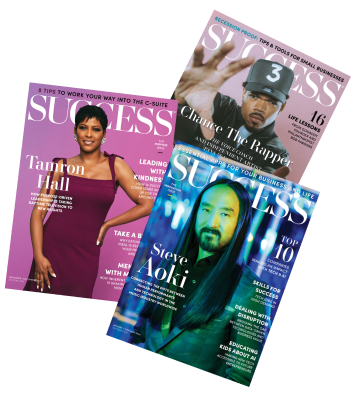Before I worked at Hallmark, I’d never bought a Valentine’s Day card. I certainly never expected to be the one making them. The first time I was assigned Valentine’s Day as an editor, I’ll admit, I wasn’t all that enthused. It wasn’t my favorite holiday, and at first glance, it didn’t feel all that interesting. Imagine my surprise, then, when it quickly became one of my favorite occasions to work on.
Digging deep into every type of relationship
Valentine’s Day provides an opportunity to dig into and really understand humans in a way very few holidays do. My job was to make sure that we had messages for every type of relationship—the idealized Hallmark movie sort, sure, but also the messy “real” couples who are just trying to figure out this life thing together.
The right Valentine’s Day card says just enough. It helps strengthen a relationship, offers a way to reconnect and shows how well you know your favorite person. It might feel like an over-the-top, ultra-mushy card is the best way to make an impact, but usually, that’s not the case.
What I’ve discovered over the years is that the secret to editing greeting cards is the same as the secret to buying them: Aim for a message that is meaningful while still being authentic to the reality of the relationship. I can say from experience that it’s a heck of a tightrope to walk, but when you get it right, it’s the best feeling in the world.

Learning about the shopper
One of my favorite parts of greeting card creation is learning about the shopper. Sure, this often means sorting through statistics and research, but nothing beats learning from observing humans themselves.
Over the years, I’ve found that scrolling through social media is one of the best ways to learn how people talk about the ones they love. True, you don’t get anyone’s ugliest moments from social media posts, but you don’t need to. No one wants to put their worst moments in their greeting cards, and even cards that highlight real-life things don’t focus on fights or disagreements. Ultimately, a card is a way to bring people together. Watching how people represent their own relationships online is a great way to push past tired greeting card platitudes and focus on the language and words real people use.
This exercise also helped me identify trends and patterns among different posts. For instance, one year, our team had a hot debate about whether “hubby” and “wifey” were terms that people really used (aside from as a joke on products like pillows). Digging into social media posts was a great way to see who was using these terms of endearment and whether they should be added to some of our cards.
Back when I worked at Hallmark, I often participated in market tours, where we went to the stores and observed the shoppers themselves. These opportunities gave us a chance to see which cards shoppers picked up, which they put back and which they ultimately decided to buy.
It takes a village to make a card
Even now, I’m amazed at just how many people may be involved in the making of a single greeting card. At Hallmark, every card we created was a labor of love from writers, visual partners and paper engineers. Each was a mix of art and science—strategically created, but always with an immense amount of heart.
As an editor, my job was to work with my visual partners to create a total package of what the future card could be. Sometimes we started with directions as specific as a lettering-focused card that talks about the ups and downs of a nonidealized relationship. Other times the content of the card was much more open-ended, and the prompt offered a way to depict a couple without limiting the race or gender of the sender and recipient. Sometimes, there was no initial goal for the spot at all, and it was our job to figure out what the line was missing.
The secret to buying the perfect Valentine’s Day card
Every card out there is meant to work for a whole lot of people—otherwise, the companies wouldn’t make any money. Even so, a good greeting card should feel as though it was written just for you and your relationship.
If you’re looking to up your game and find that perfect fit, here are some places to start:
Shop early
Unless you’re a last-minute shopper, try not to be one of the people crowded in the greeting card aisle on Feb. 14, digging through the dredges. The cards come out as soon as Christmas comes down, which gives you a solid month and a half to find one you adore. For even more flexibility, you can shop online, where many companies keep the various holiday cards live all year.
Don’t limit yourself to Valentine’s Day cards
Particularly for romantic cards, you can often find the perfect card in the anniversary or love section of a store or website. You can always add a “Happy Valentine’s Day” to a love card if you really want the holiday to be called out.
Look for icons and words that make you think of your relationship
Maybe you love to camp together or do puzzles while you watch your favorite show. Maybe you love a good bit of humor. Things that remind you of your relationship can make a card feel especially personal without having to get too sentimental.
Pick the words based on how much you want to write
If you prefer to write your own message, it’s great to choose a card that is blank or has fewer words on it. However, if you feel stuck easily, finding one that already says just the right thing can be a big relief. Remember that the words are personal because you chose them, even if you didn’t write them yourself. They still mean just as much.
Read the card
This feels like it should be self-explanatory, but people get into a rush and assume any card will work. They’re wrong. For instance, once a Hallmarker’s husband gave them a card all about what a great family they’d raised together. It was touching and sweet and long, but there was one big problem—they didn’t have any kids. Avoid this awkwardness and make sure you know what you’re buying.
Shop from the heart (not the price tag)
Despite what card companies will try to tell you, a more expensive card will not necessarily mean more than one from the dollar store. A generic heart covered in fancy glitter may have cost you $10, but if the message or art on the $1 card speaks to your relationship more, it’s the one they’ll love most. (Plus, many lower priced cards are created by the same companies as the expensive ones, so you’re likely to find high-quality messages and beautiful illustrations, just without the bells and whistles.)
Explore beyond the obvious places
Though I’ve been using examples of cards I made while at Hallmark, it’s important to remember that Hallmark and American Greetings aren’t the only options out there. For instance, Lovepop has intricate pop-up cards, Em and Friends and Thoughtful Human are known for their unique voices and Paper Source has some great, simply stated options. Checking out bookstores and card shops near you is also a great way to find a good fit, as many have cards by local artists.
Photo by ORION PRODUCTION/Shutterstock










